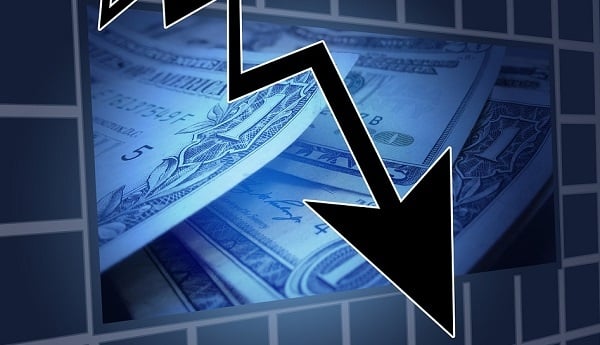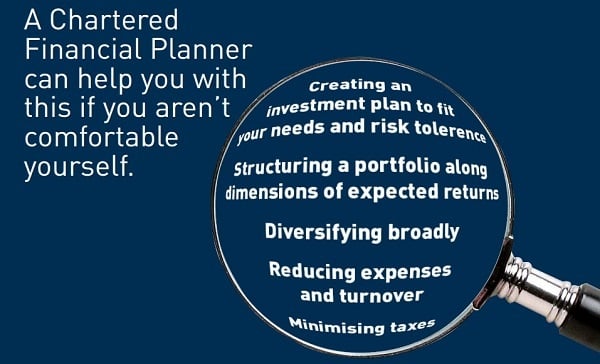[Estimated time to read: 4.5 minutes]
It’s April 2015, and the BBC headline reads: “FTSE 100 closes at record high…”
The market has hit 7100, and investor sentiment is ebullient.
What goes up must come down…
Fast forward 10 months to February 2016…
![]()
About 22% has been wiped away as the FTSE bottoms out at just over 5500.
Just before the bottom, RBS writes to clients saying:
“Sell everything except high quality bonds. This is about return of capital, not return on capital. In a crowded hall, exit doors are small.”

Are you panicking yet?
In monetary terms, January and February 2016 saw a total of £862m withdrawn from equity funds.
If you’ve sold, you’re not alone…
Dead cats bouncing?
But now it’s April 2016, and the FTSE 100 has rallied again to 6400…
Thank goodness – are you back in yet?
Or did you manage to foresee the 8% plummet the week before the EU referendum vote?
If you did, now you can forget about that, because on the day of the referendum these loses are forgotten; the FTSE 100 rallies by almost 8%.
Yeah!
Before falling back again.
Nooooooo!
Over the whole Brexit period of June and July 2016, a net total of £4.5bn was withdrawn…
Were you in or out?
America first!
Let’s fast forward to November 2016 now, and the joke about a madman taking over the White House is about to become a reality.
Commenting on the potential for a Trump victory, a spokesperson for one of America’s largest institutions by fiduciary assets, Wilmington Trust, states:
“If Trump wins, then you get a big sell-off. I think that from where we are today, until the bottom of that sell-off, you are looking at a good 10 percent easily. I think whether it goes deeper than that depends on the temperament that Trump displays after the election…”

Where’s your money at?
Will the FTSE 100 be impacted by the same percentage fall?
Trump wins…the Whitehouse becomes the House of Horrors.
Now where’s your money at?
Because the FTSE 100 is bouncing back, it’s at a healthy 6900 and rising.
Wow!
That’s a rally of nearly 25% from the February lows – did you cash in?
Friday the 13th
Now jump forward again to Friday, January the 13th 2017.
The FTSE 100 has just finished a 12-day run of consecutive record highs – it’s at an unbelievable 7337.81…
Surely you’re back in by now?
But today (I’m writing this on April 25th 2017) the FTSE has fallen back to 7274.
Are you in? Are you out? What should you do?
The real cost of timing the market in 2016
The cost of mistiming the FTSE 100 last year has been calculated and quantified.
If you were someone who fell foul of trying to time the market’s unpredictability in 2016, you may want to look away…
Here’s the calculation, crunched by my old friends at UK based Killik & co:
1. Taking an average value for the FTSE 100 Index over each of the four months of lows last year, (namely January, February, June and July 2016)
2. Based on the subsequent rise in the market;
3. Assuming that funds taken out by panicking retail investors were not reinvested back into the market;
4. Killik estimates that the amount of money lost by FTSE 100 retail investors who panic-sold to the end of September 2016 was close to £600m.
That’s the very high and real cost of trying to time market entry and exit.
“Time is the greatest money-making asset any individual can possess.” - Ed Slott
Instead of timing the market – because as I hope I’ve successfully demonstrated above, it’s not only impossible but costly - concentrate on your time in the market.
It is my belief, (backed up by plenty of evidence), that the most consistently successful investors do these 10 things:
1. Make regular contributions into a well-diversified passive portfolio
2. Benefit from pound cost averaging
3. Earn a positive trickle from dividends - about 2% a year
4. Automatically reinvest this
5. Enjoy growth averages of about 5% a year, over the long-term
6. Remain disciplined – no guessing, overreacting or damaging long-term financial ambitions with emotional reactions
7. Don’t pick stocks.
8. Own the whole market with index funds
9. Rebalance once a year
10. Get advice from a fiduciary with chartered status – that’s a financial adviser like me! Because of our qualifications and regulatory status, we are bound to act in your best interests, rather than our own!
And finally – something for you to take away and think about!
Do steps 1 – 9 above by yourself, and you will probably be more successful than the average retail investor who tried to time the FTSE 100 in 2016.
Add in step number 10, and you’ll definitely be the most successful investor you’ve ever been!

Case study:
I was advising a client last October; he was about to make a significant investment.
Considering market twitches and fear ahead of the US election result, he asked me to pull the plug on his investment.
I said I would do whatever he wanted - but that it was critical I share my expert advice - and give him a chance to change his mind.
Figuratively speaking, I talked him back in off the window ledge, I took control of his fears…
He went ahead and invested, and he is doing incredibly well as a result.
I’m not suggesting I can guess the market. No one can.
I’m showing you that all but the most experienced investors should be supported and advised by a proficient investment professional…
Otherwise, their emotions will negatively impact their investment performance.
P.s., total net withdrawals from the FTSE 100 over the worst 4 months of last year were about £5.4bn.
During the same period, AES International’s clients were investing healthily.
They profited and will continue to do so over the long term if they remain disciplined. They profited because they listened to their financial planner, not their emotions or egos!

